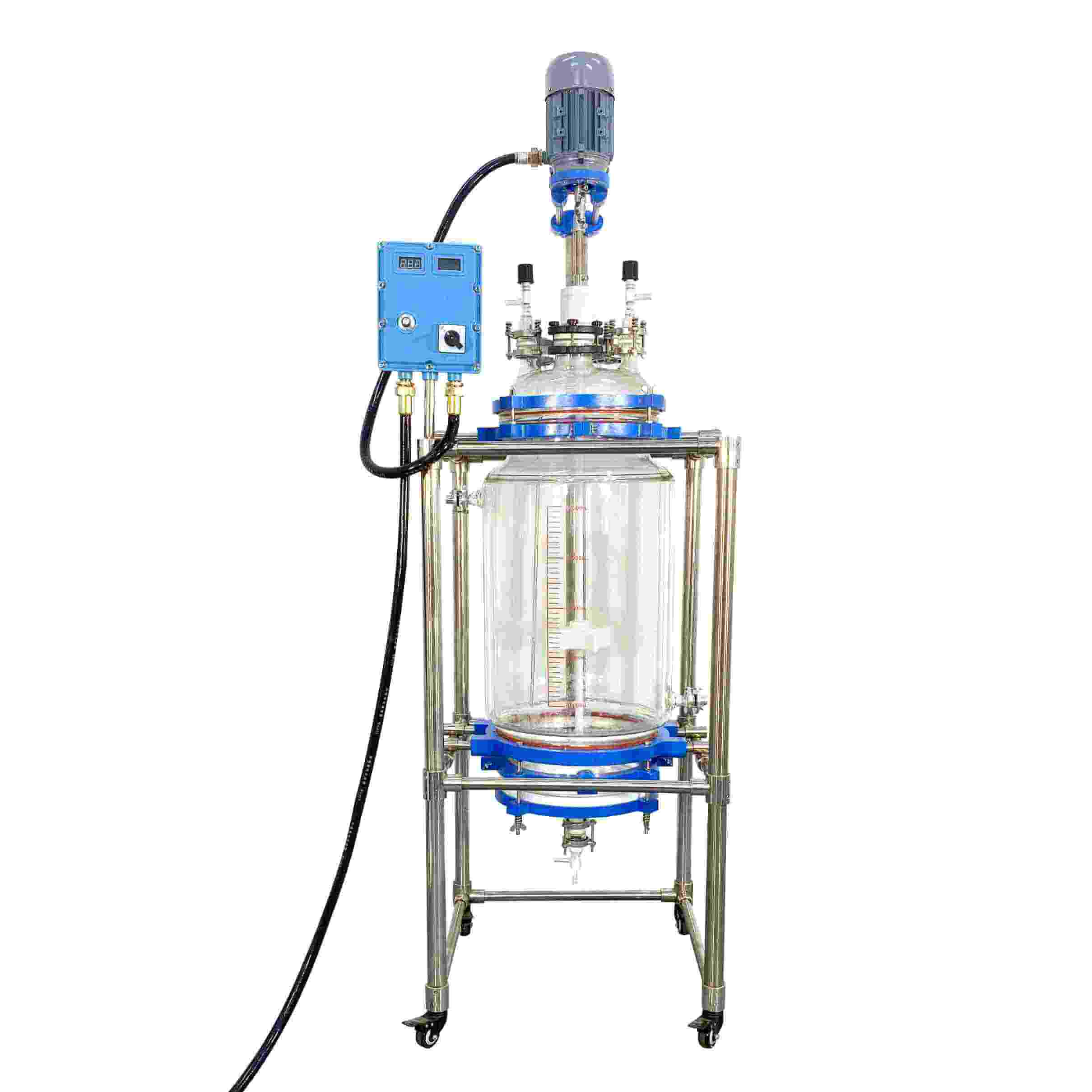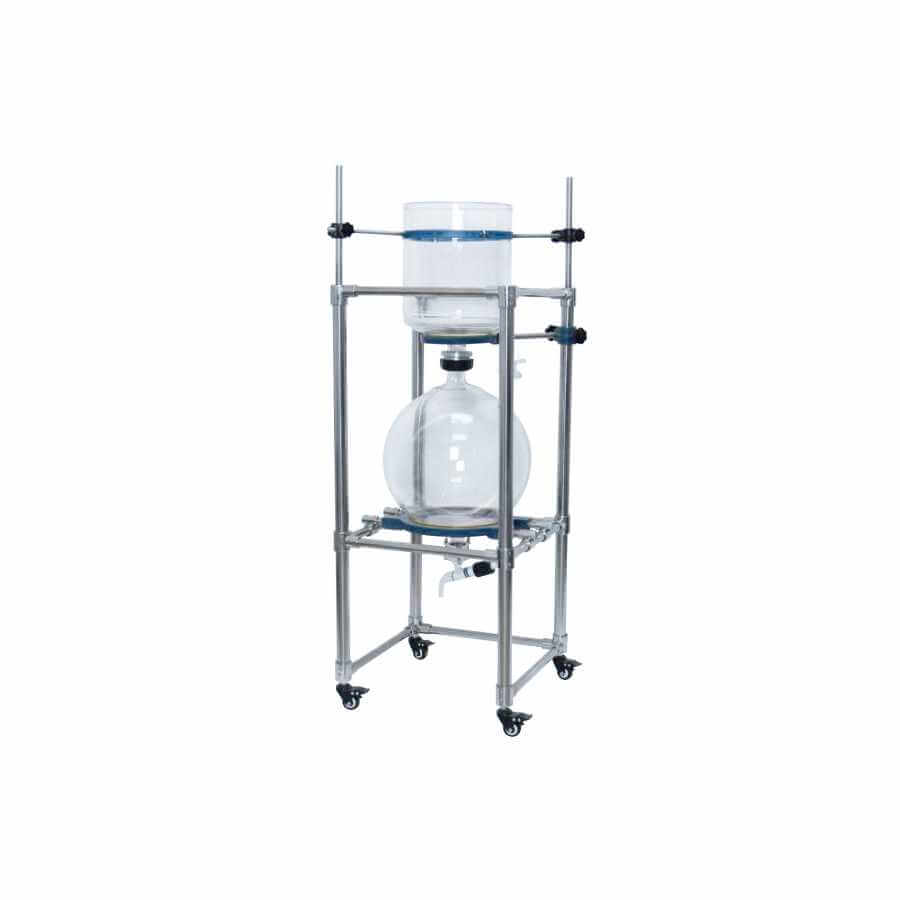

Glass Reactor
Glass reactors: used in chemical reactions, drug research and development, fine chemicals, food manufacturing, and other fields.
Material
glass
Capacity (L)
10-10000+
Mixing system
anchor, paddle, frame and others
Heating system
electric heating, oil heating and others
RUNGYU glass reactors are commonly used biochemical instruments and are widely used in modern fine chemicals, biopharmaceuticals, scientific research and experiments, and other industries. They can be used for concentration, distillation, reflux, separation, and purification reactions under the conditions of constant speed, constant force, and constant temperature. It is an ideal equipment for teaching, experiment, pilot test, and production.
Request a quoteThere are three types of glass reactor bodies: single-layer, double-layer, and three-layer. Generally, double-layer is more common, so we mainly introduce a double-layer glass reactor. First, we can place the reaction material (also called reaction solvent) in the middle interlayer. By stirring the reaction under normal pressure or negative pressure. In this way, the medium in the interlayer (such as freezing liquid, heating water or heating oil, etc.) is heated or cooled through a cyclic reaction by stirring.

The structural composition of the glass reactor
1. The kettle body and the kettle cover are made of stainless steel. The kettle body is connected with the flange through threads. The kettle cover is a normal plate cover, and the two are fastened and connected by the main bolts and nuts distributed in the circumferential direction.
2. The main sealing port of the autoclave adopts the double-line seal of type A, and the other sealing points adopt the sealing form of the line contact between the arc surface and the plane, and the arc surface and the arc surface. Good sealing effect.
3. The lid of the kettle is equipped with a pressure gauge, a bursting membrane safety device, a vapor-liquid phase valve, a temperature sensor, etc., which are convenient to know the reaction situation in the kettle at any time, adjust the medium ratio in the kettle, and ensure safe operation.
4. A barrel-shaped silicon carbide furnace core is installed on the outside of the kettle. The electric furnace wire is passed through the furnace core, and its end is pierced from the lower part of the furnace shell side.
5. The coupling is mainly composed of a pair of inner and outer magnetic rings with strong magnetic force, and there is a pressure-bearing spacer in the middle. The agitator is driven by a servo motor through a coupling. The purpose of controlling the stirring speed can be achieved by controlling the speed of the servo motor.
6. The upper part of the spacer is equipped with a tachometer coil. When the integrated stirrer and the inner magnetic ring rotate, the tachometer coil generates an induced electromotive force, which corresponds to the stirring speed. The potential is transmitted to the tachometer to display the stirring speed. Rotating speed.
7. A cooling water jacket is installed between the magnetic coupling and the kettle cover. When the operating temperature is high, cooling water should be passed through, and the magnetic steel temperature is too high to demagnetize.
8. The glass reactor bearing adopts stainless steel bearing or high-strength electrochemical graphite, which is resistant to wear and tear and has a long maintenance period.
How to use double-layer glass reactor
1. Pay attention to the relevant inspection of the power supply voltage used, and it must be consistent with the specifications provided on the machine nameplate, otherwise, there will be problems in use. When the plug of the power supply is plugged in, be sure to turn on the power switch on the inverter at this time. As for its speed, you can use the speed control button to determine the speed.
2. When the double-layer glass reactor is running, when the flow of materials or the speed of the motor gathers at a certain point, resonance will occur. At this time, attention should be paid to changing the speed of the motor to avoid resonance. of continued occurrence. To avoid such a situation, when using it, you must be careful not to leave the control of the operator.
3. After the stirring rod is installed, it must be rotated by hand before use. At this time, the problem of concentricity should be observed. If there is a problem with the concentricity, the re-clamp should be loosened at this time, and then The clip is being processed, and then turn on the power again.
4. During the use of the double-layer glass reactor, attention should be paid to the sealing of the kettle. If the sealing performance is gradually declining, the rotating bearing in the agitator should be checked. Of course, in the process of use, there will be some temporary use problems, and at this time, it is necessary to stop and check-in time.
With its advantages of constant speed, no brush, no spark, safety, and stability, the double-layer glass reactor has been widely used in laboratory instrument testing, pilot testing, and production in fine chemicals, chemistry, biopharmaceutical new material synthesis, etc.




